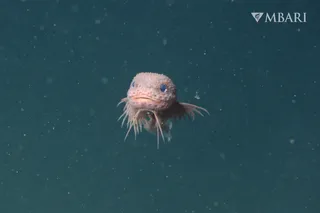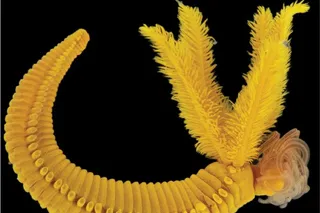Birds, whales, monkeys, and other animals constantly demonstrate simple communication through a variety of sounds. But one thing that has always separated them from humans, scientists thought, is that they haven't achieved syntax—stringing together multiple different sounds to create another meaning, or what we might think of as a sentence. Now, in a study published in yesterday's Proceedings of the National Academy of Sciences, researchers argue that they have observed monkeys using these rudimentary rules of grammar. Klaus Zuberbühler and his team previously established the meanings of specific calls among the Campbell's monkeys in the Tai National Park of the Ivory Coast, like the sound they dubbed "krak," which by itself means a leopard approaches. This time, however, they documented call combinations.
The monkeys can vary the call by adding the suffix “-oo”: “krak-oo” seems to be a general word for predator, but one given in a special context — ...














